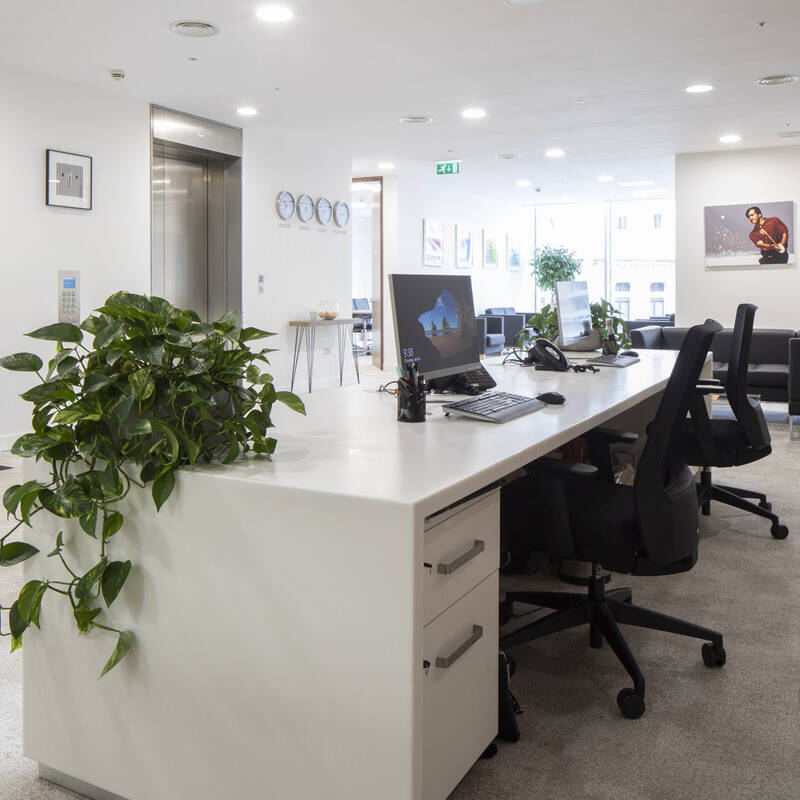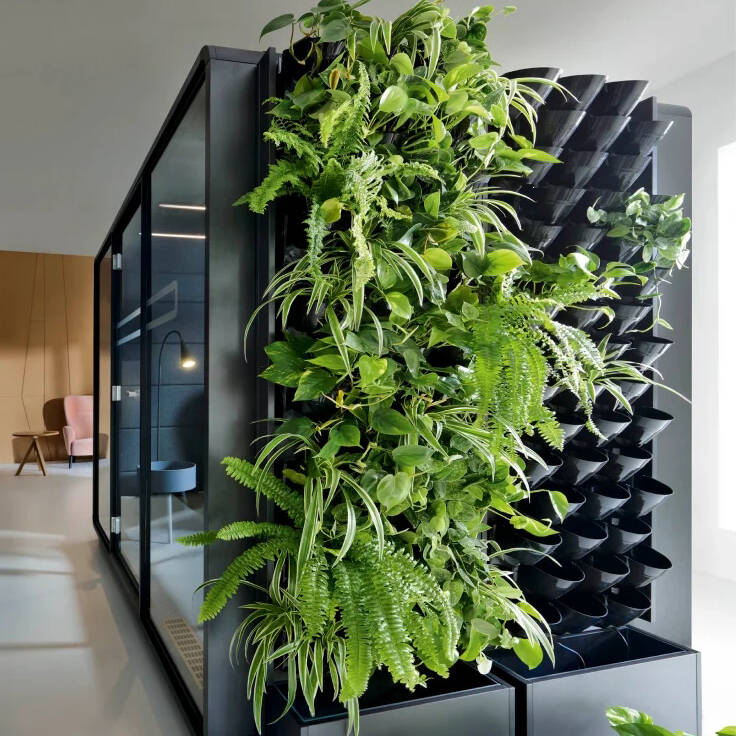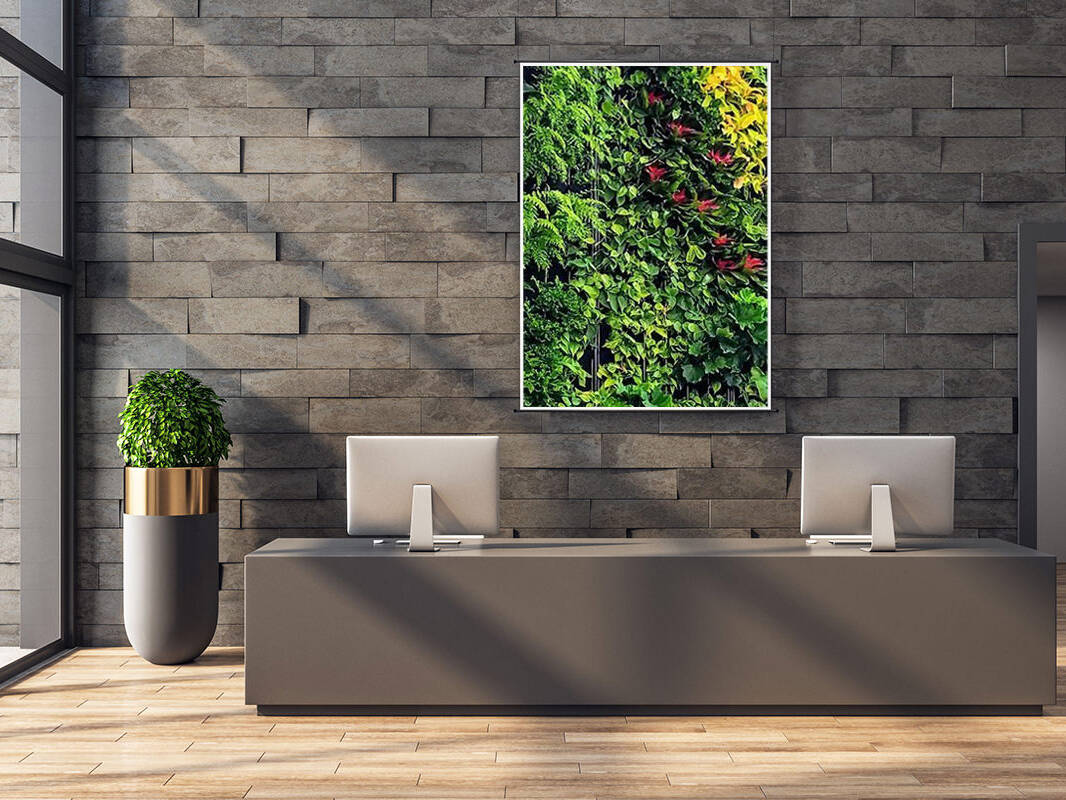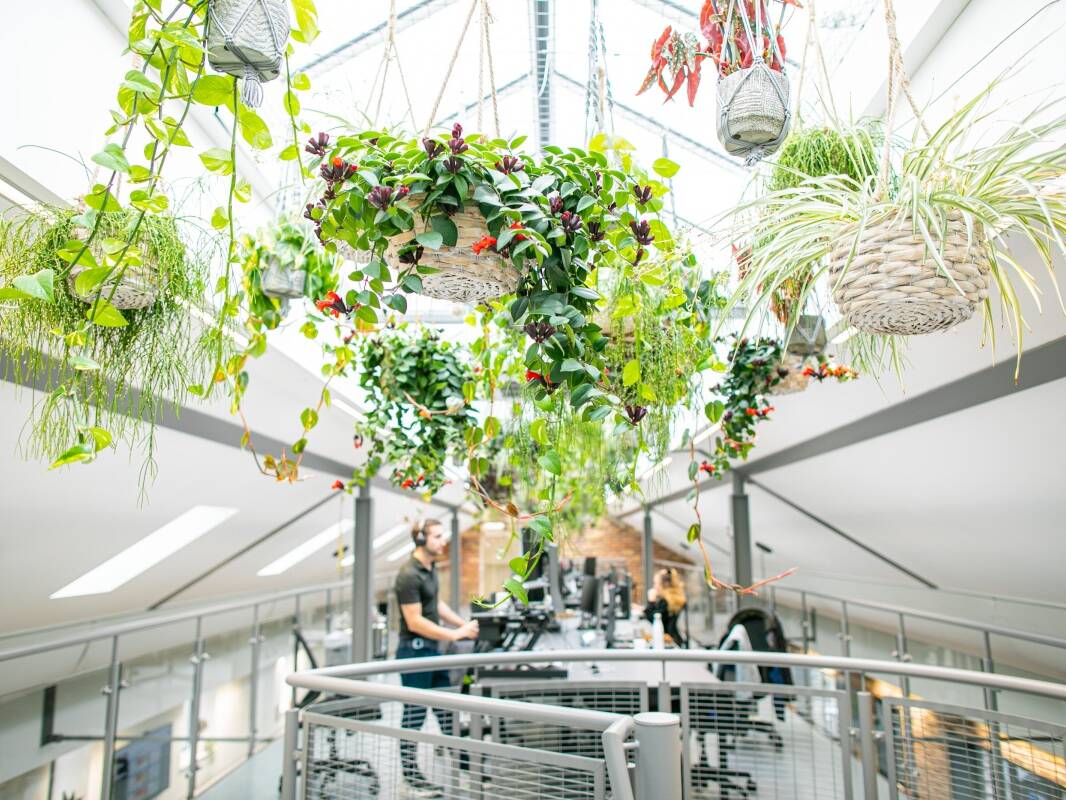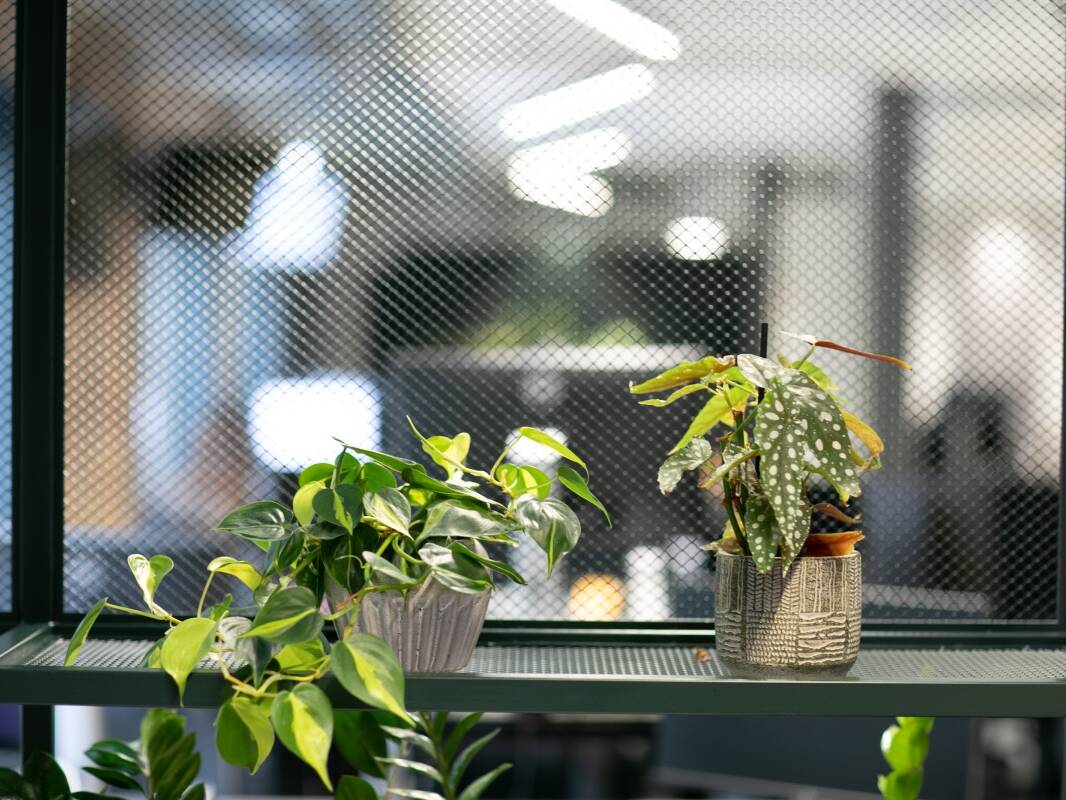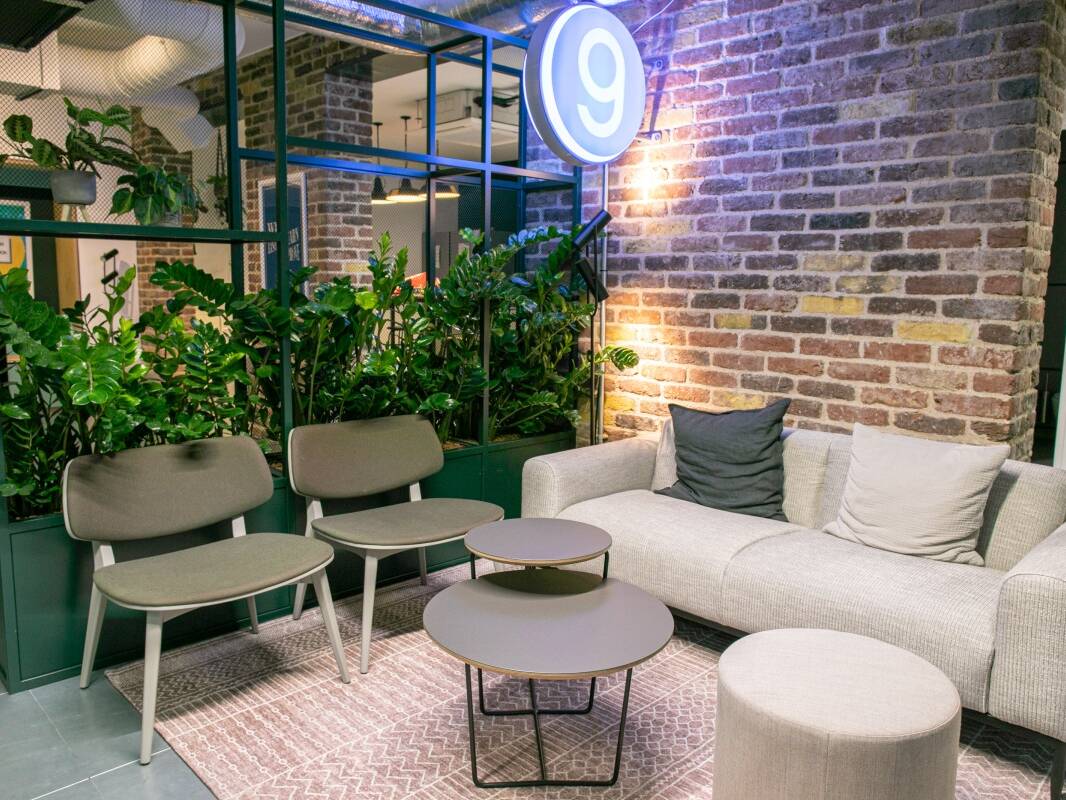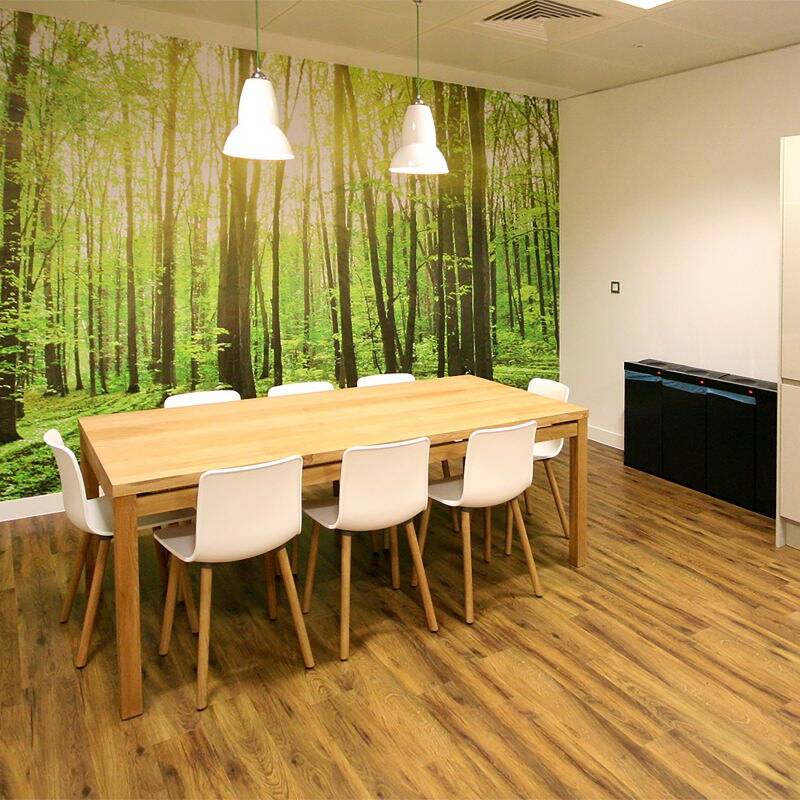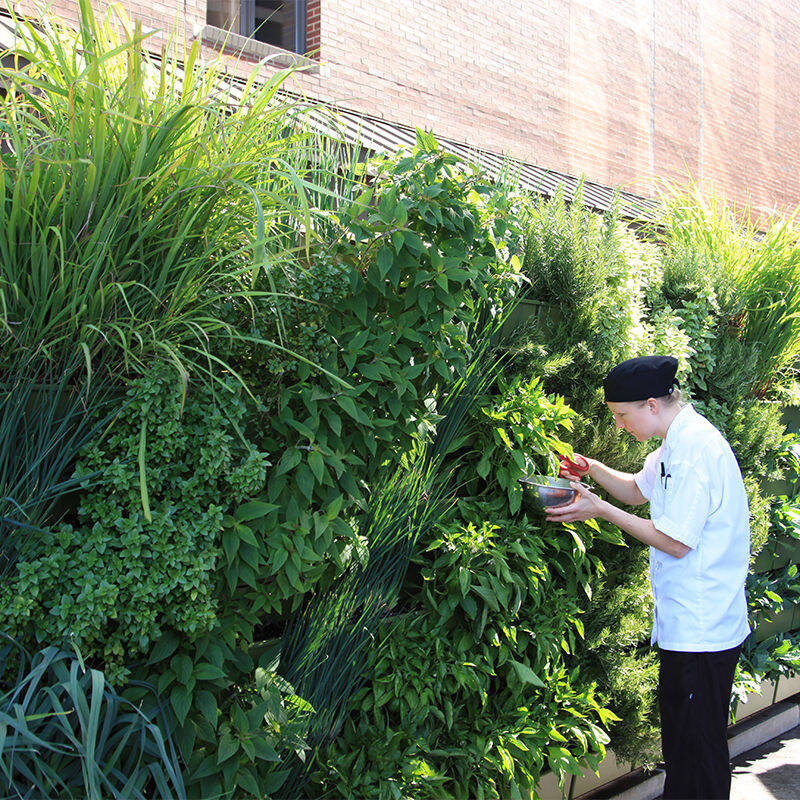Is wellness in the workplace important?
Promoting wellness and wellbeing can help to create positive working environments where individuals and organisations can thrive. Demonstrating to your employees how valuable and important they are to you, and to the success of your business, will directly impact how they feel about the company they work for and on the work that they do.
If this matters to you, and we hope that it does, then employee wellness should be high on the agenda for any upcoming office refurbishment or build.
At Anvil, wellness is much more than placing an occasional potted plant around the office. Although foliage is certainly a great start and often overlooked, creating a culture of wellness means fostering a workplace that nurtures and encourages the wellbeing of employees.
Of course you could go to town creating a complete sanctuary of wellness within your office, from yoga studios and gyms with fully kitted out changing rooms and showers, to massage and meditation facilities, but for many businesses such an expansive approach is not feasible. However, it is possible to implement simple ideas that can completely transform your space and the wellbeing of your employees.
Hygiene
The importance of hygienic surfaces, particularly in shared spaces, has been heightened by the COVID-19 pandemic. Anvil has a broad range of materials within our library that have antibacterial properties which inhibit and kill microorganisms, promote cleanliness and ensure ease of maintenance.
Lighting
The need for adequate lighting and the introduction of as much natural light as possible into a building, is essential in promoting wellness. A well lit space can help reduce headaches and eye strain, improve sleep and aid mental health. Natural light also boosts Vitamin D. There are many reasons why a clever lighting strategy should be implemented within any space, as it can have a huge impact on productivity levels and affect the mood of staff. Where there isn’t natural light — fake it!
Furniture
Furniture aimed at getting your team moving is an essential component of wellness. Whether it is a sit stand workstation or a standing project / collaboration table, the benefits of standing whilst working, even for just 30 minutes a day, can have a remarkable impact on an individual’s health. It can help decrease blood pressure, lower cholesterol, and reduce stress levels.
Standing meetings have also risen in prominence in recent years, as they have been proven to be a highly effective form of collaboration. Consequently, our design team will include tall / poseur height tables in the majority of their space plans, to facilitate this type of meeting.
Anvil also works with a number of suppliers that specialise in ergonomic furniture, such as task chairs that are designed to support each user’s individual posture. This can help to eliminate back pain, one of the leading causes of employee absenteeism. Poor posture can also cause other major health issues, such as malfunctioning digestion, circulatory problems and fatigue. Choosing the correct pieces of furniture can make a significant difference to the wellbeing of your employees.
Colour
The use of colour, and the theory behind how it can impact upon people and the way that they feel, has been analysed and tested for many years. Colours that have been scientifically proven to help increase focus and energy levels, promote creativity and honesty, aid relaxation and reduce stress, have been studied rigorously by our designers. This analysis also examines the visual impact of mixing, matching, and contrasting different hues with each other.
Colour can be injected, not only with paint, but also through the selection of colourful furniture, the addition of manifestations, graphics or even floor finishes. Clients can work with the Anvil design team to select a palette that functions harmoniously with their brand and space — just do not be afraid to have pockets of bolder, louder tones!
Biophilic Design
Biophilic design is a concept used to describe the process of bringing nature into the workplace. This can be one of the most important factors in helping to improve the overall wellbeing of an organisation, and quite often one of the simplest to achieve.
Research has shown that humans have an innate need to feel connected with nature. Consequently, when we have an increase in plant life around us, our oxygen levels are boosted, and this can result in enhanced concentration levels, improved moods and critically, greater productivity.
There are many inventive ways to create a greener office, that have much greater impact than simply putting a pot plant on every desk.
Living walls and vertical gardens are no longer a novelty and are now becoming more mainstream within business premises. This in turn has improved their maintenance systems and stabilised prices. These features can be simple in design, or as elaborate and beautiful as you want them to be. The task of maintaining a living wall has the added benefit of providing staff with an opportunity to take ownership of office space.
Hanging lightweight, low maintenance plants from fixtures in your workplace’s ceilings is a simple, creative, and an unobtrusive way to get more greenery into a building. The effect is to create a forest canopy that blankets certain areas and offers a soothing, biophilic haven. This effect is best applied en masse, and is particularly notable in larger spaces where the full effect can be dramatic. This technique was incorporated into Anvil’s workplace design for our client X+Why, at their coworking environment in East London, where the feedback from occupants has been truly amazing.
However, biophilia is not just about increasing the level of foliage within your office. Incorporating other natural features into the build environment can be hugely beneficial. Finishes and textures that mimic the outdoors such as stone, slate and wood, help to create nature-health relationships within a space. Objects, materials, colors, shapes, sequences and patterns found in nature, can be incorporated into furniture, décor, and textile choices.
Colour, lighting, airflow and ventilation also play a vital role in connecting people with nature and the wider outdoor environment. The best designed natural office spaces will elicit the most productive psychological responses from their occupants.
Cognitive Advantages
Logical and creative thought, the ability to learn, memory, and mental agility, are all part of our cognitive functions. Regular or strong contact with nature provides an opportunity for mental restoration, during which time these functions are reinvigorated. This subsequently increases our capacity to undertake more complex tasks that require greater focus.


Psychological Values
Our mood, emotions, attention, alertness, concentration, and adaptability make up our psychological state. Interaction with the natural environment has been shown to be associated with lower levels of fatigue, anxiety, confusion, tension and anger, than in an urban space. Nature is considered to be both psychologically restorative and stress reducing.
Physiological Benefits
Physiological wellbeing is related to our general physical comfort and the health of our respiratory, musculoskeletal, aural, and circadian systems. Connecting with nature has been shown to improve our physical condition, lowering stress hormones in the bloodstream, reducing diastolic blood pressure, and even causing our muscles to relax.
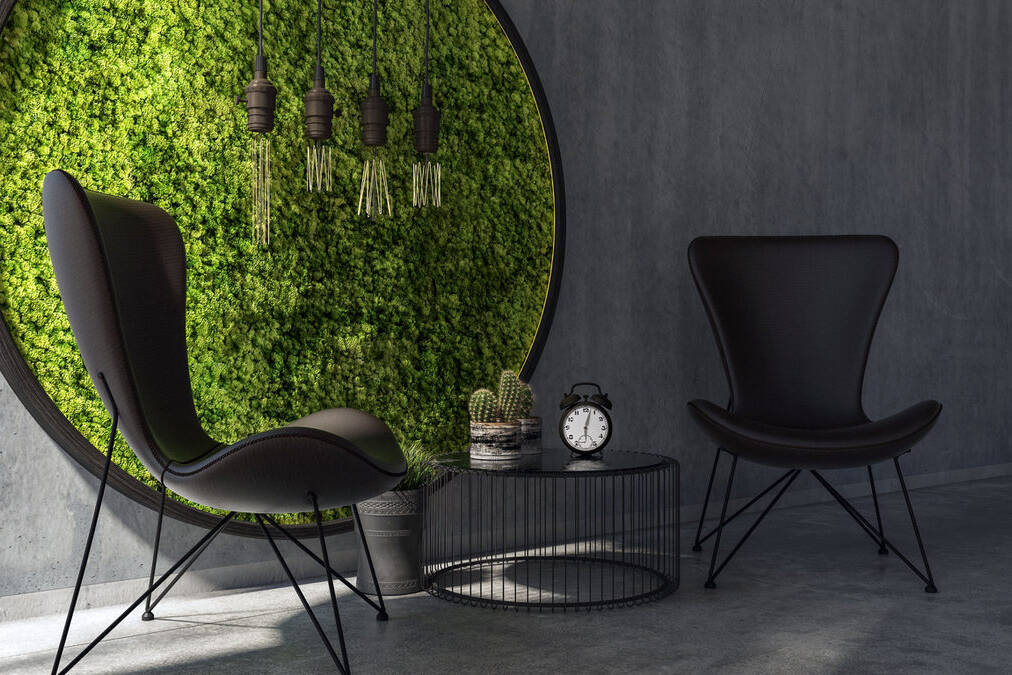
Is it worth taking wellness in the workplace seriously?
Studies undertaken as part of the Occupational Safety program run by Eastern Kentucky University, illustrate that companies in the United States alone spend $300 billion annually on missed workdays and health care resulting from workplace stress. This colossal price tag does not even account for the lower productivity rates of disengaged employees. When employees are stressed, they do not work to their full potential, and inevitably this will impact on organisational performance.
In addition to office design, wellness is also achieved by changing the workplace culture of your business. Encouraging social connection, rest periods, employees breaks throughout the day, exercise, and even the allowance of office pets, are all beneficial to staff wellbeing.
Promoting workplace wellbeing and mindfulness by creating a healthy place to work that feels safe and secure, will result in higher levels of productivity, reduced absenteeism, improved staff retention and increased morale. In the longer term, this approach can only benefit your business by reducing costs and increasing revenue.


